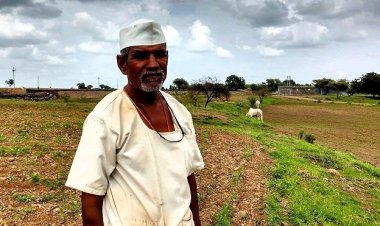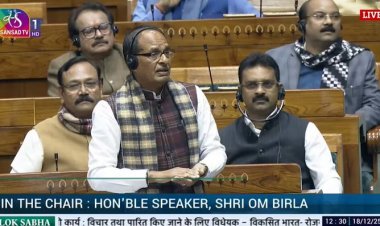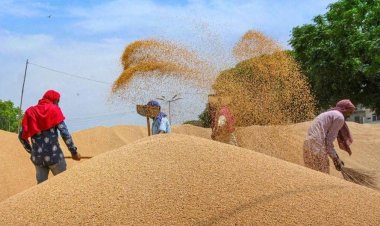3.79pc less kharif rice output at 106.31 MT
Rice production in India is estimated to drop by 3.79 per cent to 106.31 million tonnes in the kharif season of the 2023-24 crop year (July-June) due to poor rainfall in key growing states, according to the Agriculture Ministry's latest estimates. Rice production stood at 110.5 million tonnes during the same season in the previous crop year. Rice is the main kharif crop and its harvesting is underway.

Rice production in India is estimated to drop by 3.79 per cent to 106.31 million tonnes in the kharif season of the 2023-24 crop year (July-June) due to poor rainfall in key growing states, according to the Agriculture Ministry's latest estimates. Rice production stood at 110.5 million tonnes during the same season in the previous crop year. Rice is the main kharif crop and its harvesting is underway.
According to the first advance foodgrains production estimate released by the ministry, maize production is estimated to be 22.48 million tonnes in the kharif season 2023-24, lower than 23.6 million tonnes last year.
Among pulses, tur production is expected to be slightly higher this year at 3.42 million tonnes as against 3.31 million tonnes the previous year. Moong production is estimated to be 1.40 million tonnes, lower than last year's 1.71 million tonnes. Oilseeds production is estimated to decline to 21.53 million tonnes from 26.15 million tonnes. Production of groundnut and soybean is estimated to be 7.82 million tonnes and 11.52 million tonnes, respectively.
Among cash crops, sugarcane production is expected to come down to 434.7 million tonnes from 490.53 million tonnes last year. Cotton production is also expected to drop to 31.65 million bales (of 170 kg each) from 33.6 million bales, and jute to 9.19 million bales (of 180 kg each) from 9.39 million bales.
Total production of foodgrains is expected to be 148.56 million tonnes during the kharif season 2023, lower than 155.7 million tonnes last year. The first production assessment for 2023-24 (kharif) is largely based on the average yield of the last three years and may undergo a change after receiving the yield estimates based on actual crop cutting experiments, the ministry said.
India had banned the export of non-basmati white rice in July this year given the depleting public stock of foodgrain in the Central pool, elevated cereal prices and the looming threat of uneven monsoons for paddy crops in the ongoing kharif season. The Government had earlier banned wheat export with effect from May 13, 2022. A 20 per cent export duty was imposed on all non-basmati rice except parboiled rice on September 8, 2022 and banned the export of broken rice on September 9, 2022.



 Join the RuralVoice whatsapp group
Join the RuralVoice whatsapp group







































